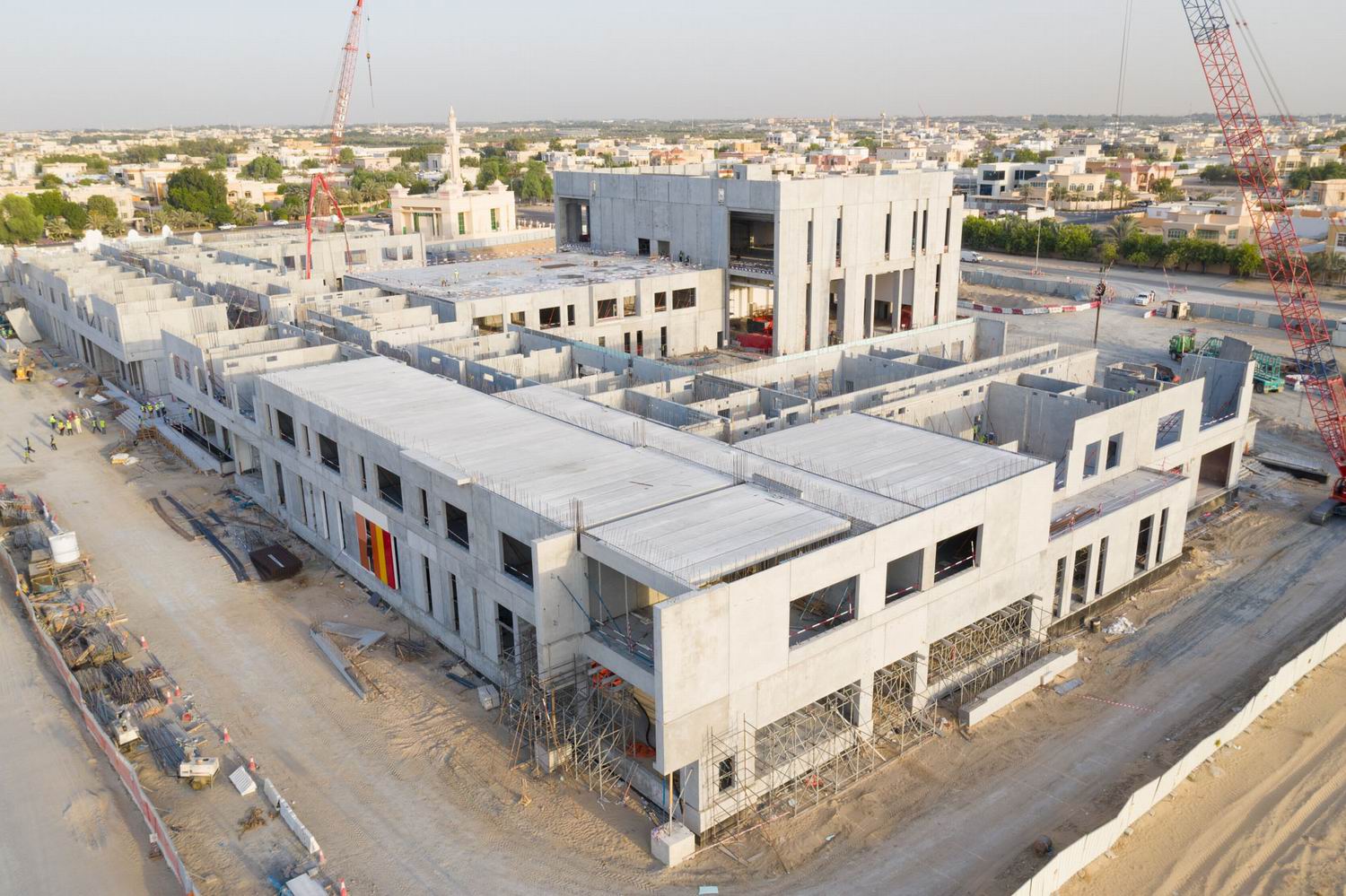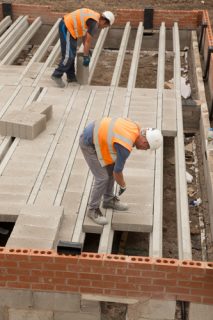Precast concrete products are construction products produced by casting concrete in a reusable mold or form, cured in a controlled environment, transported to the construction site and lifted into place. Dissimilarly, standard concrete is poured into site-specific forms and cured on site.
Precast concrete products can be said to be of better quality because precast concrete is produced in a controlled environment; it is thus afforded the opportunity to properly cure while being closely monitored by plant employees.
Other benefits of utilizing a precast concrete system stem from the fact that the production process for precast concrete is performed on ground level, aiding with safety throughout a project and financially, the forms used in a precast plant may be reused hundreds to thousands of times before they have to be replaced, allowing for cost of formwork per unit to be lower than for site-cast production.
The use of precast concrete in construction is now widely regarded as an economic, durable, structurally sound, fire resistant and aesthetically superior form of construction.
Versatility in Design
Over the last 10 years the increased availability and application of form liners to create patterns, and stains as a no maintenance 25-year alternative to a painted finish, has provided designers with a vastly increased array of textures and patterns.
Adding to this is an extensive list of options in the form of traditional architectural possibilities, such as purpose built moulds, etched, grit (sand) blasted, and exposed aggregate, polished and honed finishes are also available, as is integral colouring using pigments. And all of these finishes can be applied in the factory. Essentially one can only be limited by their imagination.
On any total precast structure there are a number of critical design features that have to be addressed at the outset, including ceiling heights, load bearing walls, accommodation of lift boxes and some of the unique façade elements, in particular balconies.
Once it is determined that the quality, safety and other requirements around these meet the brief, the design team in conjunction with the precaster is in a position to fine tune. The rest of the design refinement is centred on those issues. The essential requirement for any total precast project is to allow adequate lead time to allow such refinement.
Interior design flexibility is provided by long span precast concrete flooring systems that help building owners adapt to changing client needs in future years. Precast flooring systems can span up to 17 metres to minimise the need for interior columns required with in-situ systems. Precast also provides high loading capacity at little added cost.
The Green Factor
The manufacturing process for precast concrete uses less energy than comparable components, with less noise and air pollution and debris on site. Otherwise put, concrete is nontoxic, environmentally safe and composed of natural materials. Precast concrete products help to convey water without contributing to poor water quality.
Energy efficiency can also be achieved through precast walling and flooring. Insulation is sandwiched between an inner structural concrete layer and an external concrete layer and the three layers are held together by non-conductive connectors. The system offers the benefits of off-site manufacture, durability, fire resistance and thermal efficiency. When designed well, a building can significantly lower its heating and cooling requirements by incorporating sandwich panels into its construction.
In the case of flooring, hot or cold air is passed through the cores of high-thermal-mass hollowcore flooring and achieves high standards of year-round comfort with very low annual energy and maintenance requirements.
Efficient and Safe Erection Speeds
Efficient erection is a major advantage of precast concrete; weather conditions at the job site will not significantly affect the construction schedule and precast concrete products arrive at the job site ready to install, which can save weeks over cast-in-place construction. Granted precast concrete elements are fabricated in precast factories under quality controlled conditions using high quality materials, designs more exactly meet specifications reducing field adjustments and creating a smooth erection process with minimal surprises.
Precast reduces the need for skilled labor on site and decreases the footprint. There is no need to order raw materials such as reinforcing steel and concrete, and no time wasted setting up forms, placing reinforcement, pouring concrete and waiting for concrete to cure.
Although precast concrete is quite heavy, nearly all other competing materials require machinery for handling and installation as well. Speed of installation is more dependent on excavation than product handling and placement. Unlike other materials such as fiberglass, precast concrete does not require the use of special rigging (such as fabric slings) to avoid structural damage.
The use of precast concrete for a construction project also means improved safety because the construction site is less cluttered.
Also Read: Advantages of precast concrete design for commercial buildings
Low Cost and Staying Power
The reduced time on site during the installation of precast concrete as well as reduced propping and scaffolding costs, lower site labour costs and lower materials storage costs make for a lower overall cost when using this type of material.
The National Precast Concrete Association in America refers that studies have shown that precast concrete products can provide a service life in excess of 100 years. For severe service conditions, additional design options are available which can extend the life of the precast concrete product. This is extremely important when calculating life-cycle costs for a project.
Precast concrete also resists most substances. While no material is completely immune to attack from aggressive chemical agents, precast products can often be designed to resist corrosion in specific applications.
MACFAB equipment is a reality of a low cost product to get a concrete manufacture up and running. Their equipment is designed and manufactured to the highest international standards.
MACFAB extensive experience, commitment to quality and investment in design and capital equipment ensure customers receive products and services which provide a long term solutions at affordable prices.
Fire, Chemical and Disaster Resistant
Not only is precast concrete non-combustible but it exhibits superior performance in all disasters. Also noteworthy is that it does not lose its structural capacity as quickly as steel. Precast concrete is resistant to most substances and precast concrete products can be designed to withstand anticipated corrosive agents.
Watertightness and Buoyancy
Precast concrete products produced in a quality-controlled environment and used with high quality sealants offer a superior solution to watertightness requirements. Standard watertight sealants are specially formulated to adhere to precast concrete, making watertight multiple-seam precast concrete structures possible.
With a specific gravity of 2.40, precast concrete products resist the buoyant forces associated with below-grade construction.
Activating the Precast Advantage
Most importantly, the positives of building with precast concrete are conditional to a good working relationship between client, designer and contractor. To begin, the precast manufacturer should be involved at the earliest opportunity.
The three parties should also work toward maintaining good liaison. Reasonable time must be provided for the production of workshop drawings, mould manufacture and production and adequate advice given as regards, deliveries to site; types of units, numbers and dates. The provision and maintenance of access for the delivery of goods is the last crucial tenet.
Cement is a binder, a substance that sets and hardens independently, and can bind other materials together. Cement used in construction is characterized as hydraulic or non-hydraulic. Hydraulic cements harden because of hydration, chemical reactions that occur independently of the mixture’s water content; they can harden even underwater or when constantly exposed to wet weather.
The chemical reaction that results when the anhydrous cement powder is mixed with water produces hydrates that are not water-soluble. Non-hydraulic cements on the other hand must be kept dry in order to retain their strength.
There are major companies that deal with concrete products and supply their clients with tailor made products and services. The application of technology has enabled such companies to modernize their products thus giving the market quality assured products that come in handy to fulfill the demand and the needs of their clients,”



this comment is very good
you have to try this
We ,at CC precast solutions are the pioneers of prestressed precast concrete pavement (PPCP) in India. We provide Service Of Precast Roads In India for better quality of roads one the best precast pavement roads
Nothing better than “to cast in place”